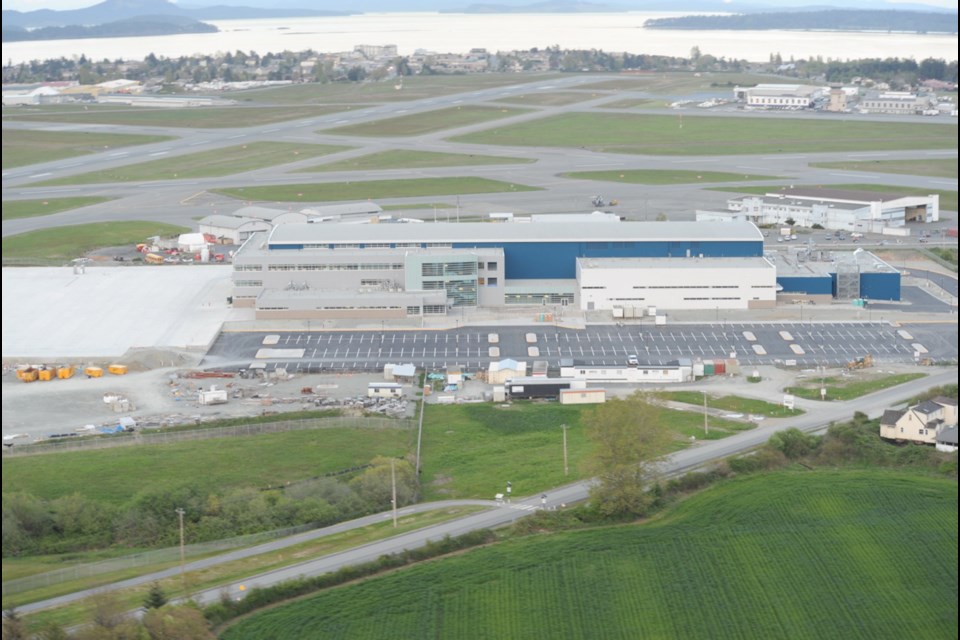When the massive $104-million home for 443 Maritime Helicopter Squadron at the Victoria International Airport opens its doors in mid-June, it will be one of the largest buildings on southern Vancouver Island.
The 215,280-square-foot building, constructed by Knappett Projects, of Victoria, will consolidate Squadron operations into one building, down from seven, with the aim of improving efficiency throughout its operations. Nine Sikorsky CH-148 Cyclone helicopters are on order to replace the current six aging Sea Kings.
Under the ground sit 1,200 steel support piles. Criss-cross bracing extends throughout the building.
Nine foam-spitting generators, set in the main hangar’s 63-foot-tall ceiling, will spew out fire retardant to smother a fire. The white foam can reach 10 feet in depth in two minutes, said Brian Fraser of Defence Construction Canada, the Crown corporation providing construction services to the military.
The hangar’s white vinyl fire-retardant doors fold up like accordions. When open, a high-pitched sound is emitted to prevent birds from entering, said Matt Haig, Knappet project manager. Human ears cannot detect the sound, but apparently birds can and they don’t like it.
An in-floor radiant-heating system will provide energy efficient heating for the hangar, said Major Donald Leblanc, who has been working on the new facility for a decade.
Smaller hangars are dedicated to jobs such as washing and doing paint work.
Scheduled to be finished in a few weeks, the building has three floors. Those storeys are higher than seen in residential construction, making it the equivalent of seven storeys, Fraser said.
This is the 25th year that 443 Squadron has been based in Greater Victoria. Some of its seven buildings are more than 60 years old. They include a tent-like storage space, Quonset huts and a brick building.
By being in so many locations, “you lose some efficiencies in operations,” Major Cory Kwansy said.
Together, the seven existing buildings total 158,000 square feet. “There is no extra capacity,” Leblanc said.
Stantec is the project’s design consultant. The new building was designed not only to house helicopters, but to provide storage, parts, maintenance, and office and meeting space for the squadron. One section will house Sikorsky staff, who will service the Cyclones, Leblanc said.
The 2 1/2-year long construction project has kept an average of 120 to 160 people working on the site, Haig said. It has delivered millions of dollars into the local economy.
Known as the Hornet Squadron, it is part of CFB Esquimalt, with 220 regular force members, 30-plus reserve members, as well as a few civilians. About 100 more personnel will eventually be added as the Cyclones arrive.
The Sea Kings will move into the new hangar until the Cyclones arrive. No delivery date has been announced. The purchase of the Cyclones has been a protracted and much-criticized process.
“In December 2013, the government of Canada signed a principles of agreement with Sikorsky Aircraft Corporation, which formed the basis of negotiations to amend the existing contracts,” the Department of Public Works said this week. “Negotiations on all key elements have been concluded. The government is confident these changes will see delivery of helicopters with operational capability sufficient to begin retirement of Sea Kings in 2015.”
The drafting of contract amendments is expected to be completed during the next few weeks, a Public Works statement said.



